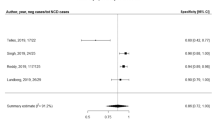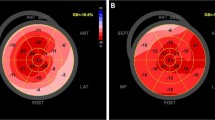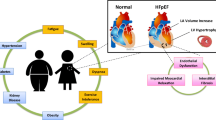Abstract
Heart failure with preserved ejection fraction (HFpEF) represents an important cardiovascular entity with increasing prevalence and relatively high mortality. The agreement about diagnostic algorithm for HFpEF is still missing. Echocardiographic approach remains the cornerstone in HFpEF diagnosis. Echocardiographic diastolic stress test provides numerous useful parameters that correlated well with indexes obtained by cardiac catheterization. Recently published consensus recommended new scoring system that included functional and structural echocardiographic parameters, as well as biomarkers. The new score for evaluation of HFpEF introduces a new set of parameters and proposed novel cutoff values for some of them. There are several important points that need to be resolved before full acceptance and clinical usage. First, some cutoff values are new and represent the result of expert consensus, without previous validation. Second, many patients with hypertension, obesity, and diabetes would be referred for further investigations as the result of this scoring, which is difficult to achieve in clinical circumstances. Third, the consensus equalized non-invasive and invasive diastolic stress tests in diagnosing of HFpEF, which is not a small issue. Namely, even though cardiac catheterization provides the final confirmation of elevated left ventricular filling pressures, it is still an invasive method, associated with procedural risk and other limitations. The aim of this review was to summarize the current knowledge diagnosis of HFpEF, as well as the recent consensus about diagnostic algorithm in patients with suspected HFpEF with its advantages and disadvantages.
Similar content being viewed by others
References
Ponikowski P, Voors AA, Anker SD, Bueno H, Cleland JGF, Coats AJS, Falk V, González-Juanatey JR, Harjola VP, Jankowska EA, Jessup M, Linde C, Nihoyannopoulos P, Parissis JT, Pieske B, Riley JP, Rosano GMC, Ruilope LM, Ruschitzka F, Rutten FH, van der Meer P, ESC Scientific Document Group (2016) 2016 ESC Guidelines for the diagnosis and treatment of acute and chronic heart failure: the Task Force for the diagnosis and treatment of acute and chronic heart failure of the European Society of Cardiology (ESC) developed with the special contribution of the Heart Failure Association (HFA) of the ESC. Eur Heart J 37(27):2129–2200
Loai S, Cheng HM (2020) Heart failure with preserved ejection fraction: the missing pieces in diagnostic imaging. Heart Fail Rev 25(2):305–319
Borlaug BA, Nishimura RA, Sorajja P, Lam CS, Redfield MM (2010) Exercise hemodynamics enhance diagnosis of early heart failure with preserved ejection fraction. Circ Heart Fail 3:588–595
Nagueh SF, Smiseth OA, Appleton CP, Byrd BF 3rd, Dokainish H, Edvardsen T, Flachskampf FA, Gillebert TC, Klein AL, Lancellotti P, Marino P, Oh JK, Alexandru Popescu B, Waggoner AD (2016) Recommendations for the evaluation of left ventricular diastolic function by echocardiography: an update from the American Society of Echocardiography and the European Association of Cardiovascular Imaging. Eur Heart J Cardiovasc Imaging 17(12):1321–1360
Buggey J, Alenezi F, Yoon HJ, Phelan M, DeVore AD, Khouri MG, Schulte PJ, Velazquez EJ (2017) Left ventricular global longitudinal strain in patients with heart failure with preserved ejection fraction: outcomes following an acute heart failure hospitalization. ESC Heart Fail 4(4):432–439
Ha JW, Andersen OS, Smiseth OA (2020) Diastolic stress test: invasive and noninvasive testing. JACC Cardiovasc Imaging 13:272–282
Lam CSP, Gamble GD, Ling LH, Sim D, Leong KTG, Yeo PSD, Ong HY, Jaufeerally F, Ng TP, Cameron VA, Poppe K, Lund M, Devlin G, Troughton R, Richards AM, Doughty RN (2018) Mortality associated with heart failure with preserved vs. reduced ejection fraction in a prospective international multi-ethnic cohort study. Eur Heart J 39(20):1770–1780
Borlaug BA, Paulus WJ (2011) Heart failure with preserved ejection fraction: pathophysiology, diagnosis, and treatment. Eur Heart J 32:670–679
Owan TE, Hodge DO, Herges RM, Jacobsen SJ, Roger VL, Redfield MM (2006) Trends in prevalence and outcome of heart failure with preserved ejection fraction. N Engl J Med 355:251–259
Bhatia RS, Tu JV, Lee DS, Austin PC, Fang J, Haouzi A, Gong Y, Liu PP (2006) Outcome of heart failure with preserved ejection fraction in a population-based study. N Engl J Med 355:260–269
MAGGIC Collaborative Group (2012) The survival of patients with heart failure with preserved or reduced left ventricular ejection fraction: an individual patient data meta-analysis. Eur Heart J 33:1750–1757
Pieske B, Tschöpe C, de Boer RA, Fraser AG, Anker SD, Donal E, Edelmann F, Fu M, Guazzi M, Lam CSP, Lancellotti P, Melenovsky V, Morris DA, Nagel E, Pieske-Kraigher E, Ponikowski P, Solomon SD, Vasan RS, Rutten FH, Voors AA, Ruschitzka F, Paulus WJ, Seferovic P, Filippatos G (2019) How to diagnose heart failure with preserved ejection fraction: the HFA-PEFF diagnostic algorithm: a consensus recommendation from the Heart Failure Association (HFA) of the European Society of Cardiology (ESC). Eur Heart J 40(40):3297–3317
Park JJ, Park CS, Mebazaa A, Oh IY, Park HA, Cho HJ, Lee HY, Kim KH, Yoo BS, Kang SM, Baek SH, Jeon ES, Kim JJ, Cho MC, Chae SC, Oh BH, Choi DJ (2020) Characteristics and outcomes of HFpEF with declining ejection fraction. Clin Res Cardiol 109(2):225–234
Tadic M, Cuspidi C, Frydas A, Grassi G (2018) The role of arterial hypertension in development heart failure with preserved ejection fraction: just a risk factor or something more? Heart Fail Rev 23(5):631–639
Cuspidi C, Sala C, Negri F, Mancia G, Morganti A, Italian Society of Hypertension (2012) Prevalence of left-ventricular hypertrophy in hypertension: an updated review of echocardiographic studies. J Hum Hypertens 26(6):343–349
Shah AM, Shah SJ, Anand IS, Sweitzer NK, O’Meara E, Heitner JF, Sopko G, Li G, Assmann SF, McKinlay SM, Pitt B, Pfeffer MA, Solomon SD, TOPCAT Investigators (2014) Cardiac structure and function in heart failure with preserved ejection fraction: baseline findings from the echocardiographic study of the treatment of preserved cardiac function heart failure with an aldosterone antagonist trial. Circ Heart Fail 7(1):104–115
de Simone G, Gottdiener JS, Chinali M, Maurer MS (2008) Left ventricular mass predicts heart failure not related to previous myocardial infarction: the cardiovascular health study. Eur Heart J 29(6):741–747
Tadic M, Cuspidi C, Celic V, Pencic B, Mancia G, Grassi G, Stankovic G, Ivanovic B (2019) The prognostic effect of circadian blood pressure pattern on long-term cardiovascular outcome is independent of left ventricular remodeling. J Clin Med 8(12)
Świerblewska E, Wolf J, Kunicka K, Graff B, Polonis K, Hoffmann M, Chrostowska M, Szyndler A, Bandosz P, Graff B, Narkiewicz K (2018) Prevalence and distribution of left ventricular diastolic dysfunction in treated patients with long-lasting hypertension. Blood Press 27(6):376–384
Zile MR, Gottdiener JS, Hetzel SJ, McMurray JJ, Komajda M, McKelvie R, Baicu CF, Massie BM, Carson PE, I-PRESERVE Investigators (2011) Prevalence and significance of alterations in cardiac structure and function in patients with heart failure and a preserved ejection fraction. Circulation. 124(23):2491–2501
Talreja DR, Nishimura RA, Oh JK (2007) Estimation of left ventricular filling pressure with exercise by Doppler echocardiography in patients with normal systolic function: a simultaneous echocardiographic-cardiac catheterization study. J Am Soc Echocardiogr 20:477–479
Burgess MI, Jenkins C, Sharman JE, Marwick TH (2006) Diastolic stress echocardiography: hemodynamic validation and clinical significance of estimation of ventricular filling pressure with exercise. J Am Coll Cardiol 47:1891–1900
Obokata M, Kane GC, Reddy YN, Olson TP, Melenovsky V, Borlaug BA (2017) Role of diastolic stress testing in the evaluation for heart failure with preserved ejection fraction: a simultaneous invasive-echocardiographic study. Circulation 135:825–838
Sharifov OF, Gupta H (2017) What is the evidence that tissue-Doppler index E/e reflects left ventricular filling pressure changes after exercise or pharmacological intervention for evaluating diastolic function? A systematic review. J Am Heart Assoc 6:e004766
Belyavskiy E, Morris DA, Url-Michitsch M, Verheyen N, Meinitzer A, Radhakrishnan AK, Kropf M, Frydas A, Ovchinnikov AG, Schmidt A, Tadic M, Genger M, Lindhorst R, Bobenko A, Tschöpe C, Edelmann F, Pieske-Kraigher E, Pieske B (2019) Diastolic stress test echocardiography in patients with suspected heart failure with preserved ejection fraction: a pilot study. ESC Heart Fail 6(1):146–153
Holland DJ, Prasad SB, Marwick TH (2010) Prognostic implications of left ventricular filling pressure with exercise. Circ Cardiovasc Imaging 3(2):149–156
Luong CPR, Oh J, Pellikka P, McCully R, Kane G (2019) Assessment of left ventricular filling pressure with exercise is independently associated with all-cause mortality in a cohort of 14,446 patients. American Society of Echocardiography Scientific Sessions. JASE 32(6):B138–B161
Ballo P, Nistri S, Cameli M, Papesso B, Dini FL, Galderisi M, Zuppiroli A, Mondillo S, Working Group Nucleus on Echocardiography of the Italian Society of Cardiology (2014) Association of left ventricular longitudinal and circumferential systolic dysfunction with diastolic function in hypertension: a nonlinear analysis focused on the interplay with left ventricular geometry. J Card Fail 20(2):110–120
Rønningen PS, Berge T, Solberg MG, Enger S, Nygard S, Pervez MO et al (2020) Sex differences and higher upper normal limits for left atrial end-systolic volume in individuals in their mid-sixties: data from the ACE 1950 study. Eur Heart J Cardiovasc Imaging
Levy D, Garrison RJ, Savage DD, Kannel WB, Castelli WP (1990) Prognostic implications of echocardiographically determined left ventricular mass in the Framingham heart study. N Engl J Med 322(22):1561–1566
Cuspidi C, Rescaldani M, Sala C, Grassi G (2014) Left-ventricular hypertrophy and obesity: a systematic review and meta-analysis of echocardiographic studies. J Hypertens 32(1):16–25
Eguchi K, Boden-Albala B, Jin Z, Rundek T, Sacco RL, Homma S, Di Tullio MR (2008) Association between diabetes mellitus and left ventricular hypertrophy in a multiethnic population. Am J Cardiol 101(12):1787–1791
Lang RM, Badano LP, Mor-Avi V, Afilalo J, Armstrong A, Ernande L, Flachskampf FA, Foster E, Goldstein SA, Kuznetsova T, Lancellotti P, Muraru D, Picard MH, Rietzschel ER, Rudski L, Spencer KT, Tsang W, Voigt JU (2015) Recommendations for cardiac chamber quantification by echocardiography in adults: an update from the American society of echocardiography and the European association of cardiovascular imaging. J Am Soc Echocardiogr 28:1–39
Tadic M, Cuspidi C, Pencic B, Andric A, Pavlovic SU, Iracek O, Celic V (2016) The interaction between blood pressure variability, obesity, and left ventricular mechanics: findings from the hypertensive population. J Hypertens 34(4):772–780
Tadic M, Ilic S, Cuspidi C, Stojcevski B, Ivanovic B, Bukarica L, Jozika L, Celic V (2015) Left ventricular mechanics in untreated normotensive patients with type 2 diabetes mellitus: a two- and three-dimensional speckle tracking study. Echocardiography. 32(6):947–955
Tadic M, Cuspidi C, Vukomanovic V, Ilic S, Obert P, Kocijancic V, Celic V (2018) Layer-specific deformation of the left ventricle in uncomplicated patients with type 2 diabetes and arterial hypertension. Arch Cardiovasc Dis 111(1):17–24
Saito M, Khan F, Stoklosa T, Iannaccone A, Negishi K, Marwick TH (2016) Prognostic implications of LV strain risk score in asymptomatic patients with hypertensive heart disease. JACC Cardiovasc Imaging 9(8):911–921
Karlsen S, Dahlslett T, Grenne B, Sjøli B, Smiseth O, Edvardsen T, Brunvand H (2019) Global longitudinal strain is more reproducible measure of left ventricular function than ejection fraction regardless of echocardiographic training. Cardiovasc Ultrasound 17(1):18
Potter E, Marwick TH (2018) Assessment of left ventricular function by echocardiography: the case for routinely adding global longitudinal strain to ejection fraction. JACC Cardiovasc Imaging 11(2 Pt 1):260–274
Anand IS, Rector TS, Cleland JG, Kuskowski M, McKelvie RS, Persson H, McMurray JJ, Zile MR, Komajda M, Massie BM, Carson PE (2011) Prognostic value of baseline plasma amino-terminal pro-brain natriuretic peptide and its interactions with irbesartan treatment effects in patients with heart failure and preserved ejection fraction: findings from the I-PRESERVE trial. Circ Heart Fail 4(5):569–577
Salah K, Stienen S, Pinto YM, Eurlings LW, Metra M, Bayes-Genis A, Verdiani V, Tijssen JGP, Kok WE (2019) Prognosis and NT-proBNP in heart failure patients with preserved versus reduced ejection fraction. Heart. 105(15):1182–1189
de Boer RA, Nayor M, deFilippi CR, Enserro D, Bhambhani V, Kizer JR, Blaha MJ, Brouwers FP, Cushman M, JAC L, Bahrami H, van der Harst P, Wang TJ, Gansevoort RT, Fox CS, Gaggin HK, Kop WJ, Liu K, Vasan RS, Psaty BM, Lee DS, Hillege HL, Bartz TM, Benjamin EJ, Chan C, Allison M, Gardin JM, Januzzi JL Jr, Shah SJ, Levy D, Herrington DM, Larson MG, van Gilst WH, Gottdiener JS, Bertoni AG, Ho JE (2018) Association of cardiovascular biomarkers with incident heart failure with preserved and reduced ejection fraction. JAMA Cardiol 3(3):215–224
Kosmala W, Przewlocka-Kosmala M, Rojek A, Marwick TH (2019) Comparison of the diastolic stress test with a combined resting echocardiography and biomarker approach to patients with exertional dyspnea: diagnostic and prognostic implications. JACC Cardiovasc Imaging 12(5):771–780
Nedeljkovic I, Banovic M, Stepanovic J, Giga V, Djordjevic-Dikic A, Trifunovic D, Nedeljkovic M, Petrovic M, Dobric M, Dikic N, Zlatar M, Beleslin B (2016) The combined exercise stress echocardiography and cardiopulmonary exercise test for identification of masked heart failure with preserved ejection fraction in patients with hypertension. Eur J Prev Cardiol 23(1):71–77
Author information
Authors and Affiliations
Corresponding author
Ethics declarations
Conflict of interests
The authors declare that they have no conflict of interest.
Additional information
The paper “Diagnostic algorithm for HFpEF: how much is the recent consensus applicable in clinical practice?” has not been submitted elsewhere, it is not under review, or published previously.
Publisher’s note
Springer Nature remains neutral with regard to jurisdictional claims in published maps and institutional affiliations.
Rights and permissions
About this article
Cite this article
Tadic, M., Cuspidi, C., Calicchio, F. et al. Diagnostic algorithm for HFpEF: how much is the recent consensus applicable in clinical practice?. Heart Fail Rev 26, 1485–1493 (2021). https://doi.org/10.1007/s10741-020-09966-4
Published:
Issue Date:
DOI: https://doi.org/10.1007/s10741-020-09966-4




